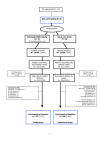Effectiveness of a Minimal Intervention for Stress-related mental disorders with Sick leave (MISS); study protocol of a cluster randomised controlled trial in general practice [ISRCTN43779641]
- PMID: 16674806
- PMCID: PMC1475849
- DOI: 10.1186/1471-2458-6-124
Effectiveness of a Minimal Intervention for Stress-related mental disorders with Sick leave (MISS); study protocol of a cluster randomised controlled trial in general practice [ISRCTN43779641]
Abstract
Background: The main aims of this paper are to describe the setting and design of a Minimal Intervention in general practice for Stress-related mental disorders in patients on Sick leave (MISS), as well as to ascertain the study complies with the requirements for a cluster randomised controlled trial (RCT). The potential adverse consequences of sick leave due to Stress-related Mental Disorders (SMDs) are extensive, but often not recognised. Since most people having SMDs with sick leave consult their general practitioner (GP) at an early stage, a tailored intervention given by GPs is justified. We provide a detailed description of the MISS; that is more accurate assessment, education, advice and monitoring to treat SMDs in patients on sick leave. Our hypothesis is that the MISS will be more effective compared to the usual care, in reducing days of sick leave of these patients.
Methods: The design is a pragmatic RCT. Randomisation is at the level of GPs. They received the MISS-training versus no training, in order to compare the MISS vs. usual care at patient level. Enrollment of patients took place after screening in the source population, that comprised 20-60 year old primary care attendees. Inclusion criteria were: moderately elevated distress levels, having a paid job and sick leave for no longer than three months. There is a one year follow up. The primary outcome measure is lasting full return to work. Reduction of SMD- symptoms is one of the secondary outcome measures. Forty-six GPs and 433 patients agreed to participate.
Discussion: In our study design, attention is given to the practical application of the requirements for a pragmatic trial. The results of this cluster RCT will add to the evidence about treatment options in general practice for SMDs in patients on sick leave, and might contribute to a new and appropriate guideline. These results will be available at the end of 2006.
References
-
- Lazarus RS, Folkman S. Stress, appraisal and coping. New York: Springer Publishing Company; 1984.
-
- Palmer S. Occupational Stress. The Health and Savety Practitioner. 1989;7:16–18.
-
- OECD Economic Surveys Netherlands: Reform of the sickness and disability benefit schemes. 2004.
Publication types
MeSH terms
Associated data
LinkOut - more resources
Full Text Sources
Medical


